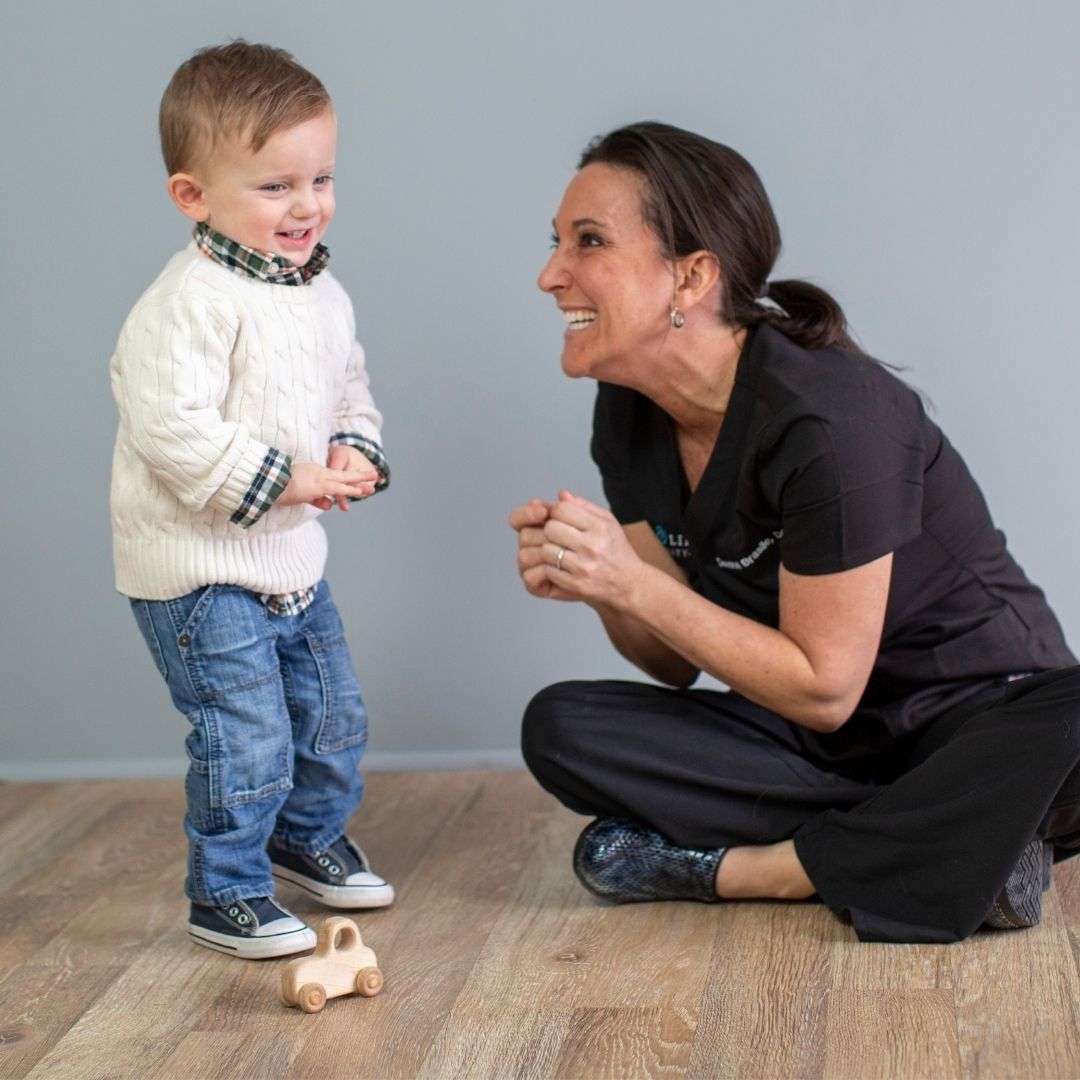What is IUI?
Intrauterine Insemination (IUI) is a type of assisted reproduction that allows physicians, midwives, or other providers to insert sperm directly into a patient’s uterine cavity during an optimal time of ovulation.
What does this mean for you?
Well, most people get pregnant by sperm being introduced to the cervix. Some LGBTQ people who are using donor sperm may try to replicate that process by putting the sperm in a menstrual cup or by otherwise placing the sperm outside the cervix. This process of insemination CAN work, but the rates of success are substantially higher if IUI is used.
With IUI, instead of counting on the sperm cells to successfully make it past the cervix (which can do a very good job of keeping sperm out), a thin catheter (medical tube) is inserted through the cervix so the sperm can be deposited directly inside the uterus. It is a minimally invasive, low-pain way to increase your chances of conception.
Who is right for IUI?
If you have been trying insemination in which sperm is introduced to the cervix (sometimes called intravaginal insemination/IVI or intracervical insemination/ICI) and it hasn’t worked, it may be time to consider IUI. Here are some other cases in which IUI may be indicated:
Unexplained infertility (multiple unsuccessful attempts at insemination)
Patients using donor sperm
Endometriosis-related infertility
Low sperm count, low motility, low mobility
Cervical factor infertility
Ovulatory factor infertility
Semen allergy
Time constraints or other urgency considerations
What is the process actually like?
At Main Line Fertility, we want you to know exactly what to expect from every part of your journey with us. Each of us knows personally how hard it can be to venture into the world of family-building; we will make sure that you know exactly how long things will take, how much it will cost, and what the rates of success are.
One IUI cycle takes roughly six weeks from start to finish. Here are the steps you can expect:
-
Fertility Health Consult
You and your partner (if applicable) will meet with your physician for testing and a personalized discussion of your fertility health and family planning goals. Together, you will decide if intrauterine insemination is the right choice for you and together, you will create a personalized treatment plan.
-
Ovulation Monitoring
Using tools provided by your physician, you will monitor your ovulation so the IUI procedure takes place during your most fertile window.
-
Insemination Procedure
Just like a routine pelvic exam, you will lie on an exam table. A thin, long, flexible catheter is inserted through your cervix (which may feel like a pap smear). Then, the sperm sample is injected into your uterus. Your partner (if applicable) or support person is welcome to join you and can even be the person to push down on the syringe of sperm, effectively being the person who “got you pregnant” (if the procedure results in a pregnancy).
The entire process is about as painful as a pap smear and takes only a few minutes to complete. Some patients do experience mild cramping following the procedure, just as they might after a pap smear.
How much does IUI cost?
One round of IUI can cost between $500-$4000.
Why such a big spread in cost?
You might want to try at-home IUI, in which case you will have to buy sperm that has been specially processed for IUI purposes (called “washing”) and hire someone to perform the process for you at home. A professional who can do an at-home insemination will usually charge roughly $500 for their services.
If you prefer to do an IUI in a medical office, such as Main Line Fertility, our providers may recommend additional testing and/or medication to ensure the success of the procedure. We consider factors like age, reproductive history and conditions, length of time attempting conception, and more! Based on your unique situation, we will suggest recommended and optional supportive processes to increase your likelihood of conception.
We will always empower you to decide which supportive services are right for you, without any pressure to do more or less than you are comfortable with.
How much rounds of IUI should we expect?
When it comes to any fertility process, there are so many variables at play (age, hormone levels, other medical considerations) so we can’t say exactly how long it will take for any one person to conceive. But when it comes to IUI, there are some specific things we know:
-
On average, a single IUI procedure has a 20% success rate. For context, the average rate of conception for cisgender, heterosexual couples is 13%. If they are tracking ovulation and are timing intercourse accurately, the average rate of conception jumps to 14%-23%. So an IUI cycle is more effective than untimed intercourse between a cisgender, heterosexual couple and about as effective as timed intercourse between the same couple.
-
After several unsuccessful IUI attempts, rates of success do drop significantly so it is likely that your physician will recommend an alternative process if you have attempted conception through IUI more than four times without success.
How can partners be involved in the process?
At Main Line Fertility, we are eager to include partners at every step of the process. Here are a few ways partners can be integral to your conception journey:
Before you even get to our office, as you are selecting a sperm donor, work together to decide which characteristics or qualities you may look for in a donor. There are several mobile apps that can be used for picking a baby name; you AND your partner enter names you each love and then the app presents you with the names you both selected. These apps can be used for selecting sperm donors! You can both look through a cryobank library of donors or think through potential donors in your life, list the names or donor numbers in the app, then see which donors you both selected.
Partners are ideal support people before, during, and after any medical procedure. Let your partner know what kind of support you need– physical, emotional, or otherwise– so they can give you the support you need.
Partners can also do a lot of the logistical and emotional labor involved in a conception process. They can call to book appointments, pick up prescriptions, ensure sperm is transported safely, and more! Fertility processes go well when both partners feel equally engaged and invested in the process. Don’t be afraid to ask for help from your partner, to offer help to your partner, and to ask for what you need (regardless of whether you’re the person conceiving or not).
If a patient’s partner also has a uterus, that individual can do a fertility check-up as well! This can be useful in case the first intended patient isn’t able to conceive and carry a pregnancy due to a medical condition; knowing about the partner’s health ahead of time can help you strategize about other options. Going through a fertility check-up can also help build critical empathy between partners– the partner knows more about what the patient is experiencing and can provide even more effective support along the way.
Finally, on the day of an IUI procedure, your partner can accompany you in the procedure room and can even be the person to inject the sperm into your uterus, effectively being the person who got you pregnant (if the procedure is successful).
Should we use fresh or frozen sperm?
There are benefits and drawbacks to both fresh and frozen options. Let’s take a look!
Fresh Sperm
If you’re working with a known donor, such as a friend or someone you have met for the express purpose of utilizing them as a donor, you may be able to use their sperm without it being frozen first.
Benefits:
-
Live, fresh sperm can substantially more “potent” than frozen sperm
Drawbacks:
-
Often, individuals and couples working with known donors aren’t aware of the added benefits of additional screening that can help ensure that their donor is producing samples that are high quality. Many of our patients attempt insemination without realizing that their known donor doesn’t have the sperm quality and quantity necessary to achieve a pregnancy.
-
Fresh sperm dies quickly! If utilizing fresh sperm, insemination must happen quickly.
-
Fresh sperm has filler material (often called semen) that isn’t appropriate for an IUI. Sperm must be “washed” in order to remove this excess material before it can be used in IUI. So fresh sperm can only be used for Intravaginal or Intracervical Insemination– not IUI.
Frozen Sperm
If you’re working with a known donor who lives far away or an unknown donor through a cryobank, you will likely be using a sample that has been collected in a clinic, washed to remove the semen, frozen, and stored at subzero temperature.
Benefits:
-
Frozen sperm has been examined under a microscope, and has been assessed for concentration, volume, and morphology (shape).
-
It’s easy to check sperm for other criteria that matters when you’re working towards conception, such as genetic variations that may be incompatible with your genetic predisposition.
Drawbacks:
-
It is substantially more expensive (in the short term, at least) to have a known donor’s sperm tested, washed, and frozen, when compared to a fresh sperm sample that hasn’t gone through any of those processes. It is also more expensive to buy sperm from a cryobank than it is to use sperm from a known donor.
-
It can be complicated to pick up frozen sperm and take it home or to a clinic (if it isn’t shipped there directly). The canister that sperm comes in is big and a tad ornery– it will fit in a normal-sized backpack but just barely.
Should we use a known or unknown donor?
There are benefits and drawbacks to both known and unknown donor options. To start, let’s define each:
Known Donor: A donor whose identity is known to you. A known donor is often someone you know, such as a friend or acquaintance, or can be someone you met for the express purpose of sperm donation.
Unknown Donor: A donor who went through an intermediary, whose identity is intended to be unknown to you. You may be familiar with the phrase “anonymous donor,” but because of readily available genetic testing, the concept of anyone being truly “anonymous” is no longer an option.
Now, what are the benefits and drawbacks of each type of donor? Let’s look!
Known Donor
Benefits:
-
Some families want the option of having a donor who is committing to some level of involvement in their lives (or the lives of their children). This option is only available if you use a known donor.
-
Should any questions about genetic diversity, allergies, developmental milestones, etc. come up, some families like the option of asking their donor for more information about those medical and/or developmental topics.
-
Some couples choose to have a relative donate sperm for their pregnancy, such as the brother of the partner who is not carrying the pregnancy. This allows for a genetic connection between the non-carrying partner and the pregnancy.
-
When working with a known donor, it is unlikely that they will have contributed to more than a handful of pregnancies throughout their lives, which is considered a positive by families who are concerned about the number of genetic “siblings” generated by one donor.
Drawbacks:
-
The legal connection between a known donor and a pregnancy can be complicated, depending on where you live. In some cases, known donors will have to go to court (perhaps even multiple times) in order to sever their legal connection to the pregnancy and ensuing baby. These court dates can be expensive.
-
There are times when donors have a change of heart, either about donating or about the type of relationship they would like to have with the pregnancy and ensuing baby. This can make for complicated, even legally messy situations.
-
In some cases, the relatives of the known donor may attempt to establish social or even legal connections to the pregnancy and/or ensuing baby.
Unknown Donor
Benefits:
-
Some families want the option of having a donor who has committed to no level of involvement in their lives (or the lives of their children). This guarantee is only available if you use an unknown donor.
-
If working with a cryobank, extensive testing is done on every donor with an emphasis on sperm quality/quantity, background examination of mental health conditions, and three generations of medical histories are examined for each donor.
-
If working with a cryobank, donors have already severed legal ties with their samples, so there is no concern about legal challenges by donors.
Drawbacks:
-
There are limited options for communicating with donors about medical questions or concerns. Cryobanks may be able to act as an intermediary, but the donor will be able to decide whether they choose to communicate and their anonymity will be prioritized throughout the process.
-
There are global limits placed on how many family units may be formed using any single donor’s sperm, and some cryobanks may choose to further limit the number of families created by their donors. However, it may still be possible that 15-25 families across the world have used the same donor you did, which means that your child/ren may have 60+ genetic “siblings.” While some families like having a connection to other families who used their donor, others don’t like the idea of having so many genetic relatives.
-
Some donor-conceived children believe that every person has the right to know the person who contributed the sperm that created them, and that type of relationship isn’t possible with an unknown donor.
Should we opt for an at-home or in-clinic IUI?
Just like your choice to use fresh or frozen sperm (or a known vs unknown donor) is a personal choice, so too is the decision to try IUI at home or in a clinic.
Some people prefer the privacy and intimacy of their own home, and a trained midwife can wash fresh sperm or thaw frozen sperm for an at-home IUI. A trained midwife can also help you track your ovulation so your insemination occurs at your most fertile time of the month.
Other people prefer to have their sample thawed in a clinical setting, where the provider can monitor the temperature and check the sample under a microscope to make sure it survived the freezing and thawing process. Cryobanks should replace any failed sample for free upon a doctor’s request. If your insurance covers IUI’s, it is likely that you will only receive coverage and/or reimbursement for an IUI performed in a doctor’s office. If your insurance covers IVF treatment, it is likely that only the IUI’s performed in a doctor’s office will be considered when your insurer decides whether you qualify for IVF coverage.
Because each IUI attempt has so many variables– ovulation timing, hormones, age, sperm quality– it is hard to say definitively whether at-home IUI’s are as successful as in-clinic IUI’s.


